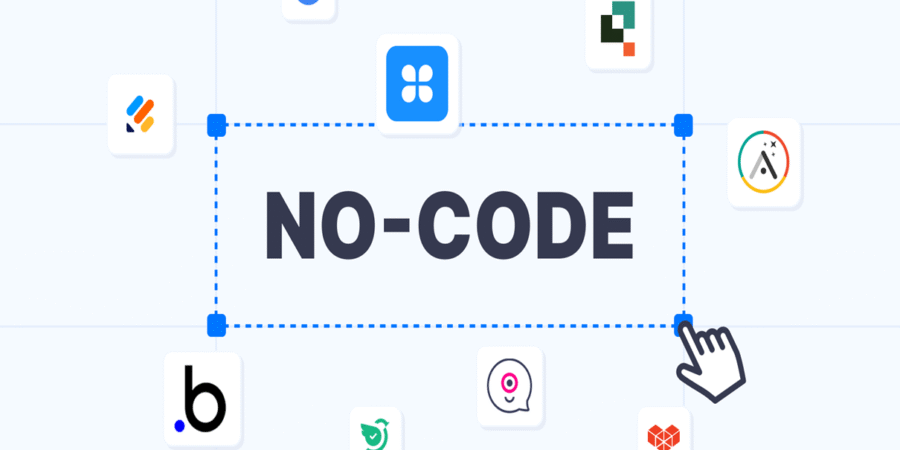Best No-Code Courses to Build Apps Without Programming
Ever had a brilliant app idea but no clue how to code? You’re not alone. Thousands of entrepreneurs, freelancers, and small business owners face this exact problem. Traditionally, building an app meant learning complex programming languages or hiring expensive developers. But thanks to no-code tools and no-code courses, that’s no longer the case.
No-code development courses teach you how to build fully functional apps, websites, and automations—without writing a single line of code. These platforms empower people with zero technical background to bring their ideas to life quickly and affordably. With tech demand booming and digital skills more in-demand than ever, no-code knowledge can be a real career and business booster.
In this post, we’ll explore what no-code courses are, why they’re gaining popularity, what to expect when taking one, and which platforms are best for getting started. Whether you want to launch a startup or streamline your workflow, no-code learning could be the key to turning your vision into a reality.
What Is No-Code Development, and Why Is It Booming?
No-code development refers to creating software applications using visual interfaces and drag-and-drop tools instead of traditional coding languages like JavaScript or Python. These tools often offer templates, pre-built components, and user-friendly dashboards that make building digital products incredibly accessible.
The no-code movement is booming for a few reasons. First, it democratizes technology, making it possible for non-developers to create digital solutions. Second, businesses are constantly looking for faster, cheaper ways to build and iterate products. No-code offers exactly that. In fact, Gartner predicts that by 2025, 70% of new applications developed by enterprises will use no-code or low-code technologies.
From building mobile apps to automating business workflows, no-code is being used in real-world scenarios daily. Entrepreneurs use it to launch MVPs, marketers automate lead capture processes, and educators create e-learning platforms—all without hiring a single developer.
What You’ll Learn in a No-Code Course
No-code courses typically cover more than just the tools—they teach a whole new mindset. You’ll learn how to break down your app idea into logical workflows, design intuitive interfaces, and connect services through automation platforms like Zapier or Make.
Expect to gain hands-on experience with top no-code platforms like Bubble, Webflow, Glide, and Adalo. These platforms allow you to build everything from landing pages to complex marketplace apps. Courses also teach basic UX/UI design principles, database structure fundamentals, and how to test and launch your project.
Most no-code development courses include project-based learning, so you’ll walk away with a tangible app or workflow you’ve built yourself. Some even include community access, mentoring, and feedback loops, which can significantly enhance your learning curve and confidence.
If you’re aiming to transition into a tech career or start your own SaaS business, these skills can be your fast track into the industry.
Top No-Code Platforms You’ll Encounter in Courses
One of the most exciting things about learning no-code is exploring the tools themselves. Each platform has its strengths, and most courses focus on one or two to ensure mastery.
Bubble is a popular platform for building web applications. It allows deep customization and even has a built-in database. Many no-code bootcamps focus on Bubble due to its ability to support scalable, logic-heavy apps like marketplaces or CRMs.
Webflow is another widely used no-code tool focused on website design. It’s ideal for those looking to create visually stunning websites with professional-level UX/UI. Designers and marketers flock to Webflow because it merges design freedom with CMS functionality.
Glide and Adalo are more mobile-app-centric. Glide uses Google Sheets as its backend, making it beginner-friendly. Adalo offers a native mobile app experience with drag-and-drop logic and custom databases.
Zapier and Make (formerly Integromat) are workflow automation tools. These connect your app or website with other platforms like Google Sheets, Slack, Airtable, and thousands more. Courses that include automation training can help you save time and streamline operations across tools.
Who Should Take a No-Code Course?
No-code courses aren’t just for aspiring tech founders. They’re for anyone looking to solve a problem digitally, automate a process, or test a business idea without hiring a developer. Freelancers and solopreneurs use no-code to create client portals, booking apps, and eCommerce sites. Small business owners can use it to automate inventory systems or improve customer experience through chatbots or mobile apps.
Even corporate teams benefit from no-code skills. Marketing departments use tools like Webflow and Zapier to launch campaigns faster. HR teams can automate onboarding processes. Product managers use Bubble to prototype ideas before passing them to developers.
Students and career changers also benefit immensely. No-code development is a gateway into tech jobs like product design, UX/UI, and technical project management—without needing to write traditional code. It’s a faster, more accessible path to digital literacy and career mobility.
What to Look for in a High-Quality No-Code Course
Not all no-code courses are created equal. When choosing one, look for curriculum depth, tool variety, and real-world project opportunities. Ideally, the course should offer hands-on assignments that result in a portfolio-ready project. Courses that incorporate design principles and logic thinking alongside tool usage tend to produce better outcomes.
Good no-code courses often include community access. Whether through Slack groups, Discord servers, or live webinars, learning alongside others helps maintain momentum and provides much-needed troubleshooting support.
Also, check if the course is updated regularly. No-code platforms evolve quickly, and a great course will reflect the latest changes. Instructor credentials matter, too—look for creators who have successfully built projects or businesses with no-code tools.
Some notable platforms offering high-quality no-code courses include Makerpad, Nocode.tech, Zeroqode Lab, and Udemy. Many of these offer beginner to advanced tracks, so you can start from scratch and level up over time.
Real-World Success Stories: No-Code in Action
Many successful startups and solo creators have built thriving businesses using only no-code tools. For instance, the founders of Dividend Finance, a financial services app, launched their MVP with Bubble before raising millions in funding. Similarly, solo entrepreneurs have built niche marketplaces and subscription businesses on Webflow and Memberstack.
Another notable example is Scribly.io, a content marketing agency built entirely with no-code tools. Its founder used Airtable, Zapier, and Webflow to create a system for client onboarding, order fulfillment, and internal project management—all without writing code.
These stories prove that you don’t need a computer science degree or venture capital to create value. You just need the right tools, a bit of guidance, and the willingness to learn. No-code courses provide the roadmap to making that happen.
Conclusion
The rise of no-code development has made app creation more accessible than ever. Whether you’re a business owner, freelancer, or future founder, learning no-code empowers you to build digital products, automate workflows, and scale ideas—all without writing code. By taking a well-structured no-code course, you gain not just technical skills, but creative independence and problem-solving abilities.
From visual builders like Bubble and Webflow to workflow automators like Zapier and Make, the no-code ecosystem continues to evolve rapidly. Investing time in learning these tools now can give you a competitive edge in a tech-driven world.



Leave a Reply